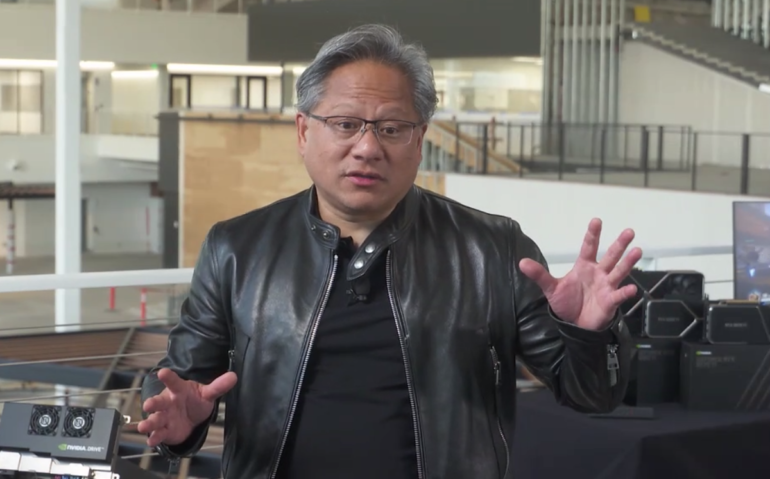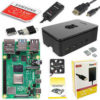Nvidia CEO Jensen Huang
Image: Nvidia
During its Computex keynote this week, AMD CEO Dr Lisa Su teased that the company had paired up with Samsung to work on adding ray tracing to an Exynos chip, but further details will be announced by the South Korean giant later in the year.
Talking to journalists on Wednesday, Nvidia CEO Jensen Huang said now was not the time for his company to look at doing the same.
“Ray tracing games are quite large, to be honest. The data set is quite large, and there’ll be a time for it,” Huang said. “When the time is right we might consider it.”
The alternate route onto mobile, according to Huang, is Nvidia’s GeForce Now cloud gaming service, which launched at the start of 2020.
“That’s how we would like to reach Android devices, Chrome devices, iOS devices, Mac OS devices, Linux devices, all kinds of devices, whether it’s on TV, or mobile device, or PC,” he said.
“I think that’s for us, right now, that’s the best strategy.”
The service boasts over 10 million gamers from 70 countries, and has 1,000 games from 300 publishers, the CEO said.
Expanding on thoughts from April, Huang said Nvidia’s situation during the current semiconductor shortage was different to those involved in commodity components.
He argued Nvidia hasn’t raised prices and that having GPU products designed for cryptocurrency mining, or limiting it on hardware aimed at gamers, has meant the company was increasing supply.
“Our strategy is to alleviate, to reduce the hot demand that is caused by crypto mining, and create a special product, CMP, directly for the crypto miners, and if the crypto miners can buy directly from us, a large volume of GPUs [that] cannot be used for GeForce but they could use for crypto mining, it would discourage them from buying from the open market,” he said.
The Nvidia CEO said CMP was worth $150 million in its most recent quarter, and was forecast to hit $400 million this quarter.
“Because they were supply that we otherwise couldn’t use, and we diverted good yielding supply to GeForce gamers to workstations and such … CMP effectively increases our supply,” Huang said.
“CMP also has the benefit, the after-benefit of not being able to be resold second hand to GeForce customers because it doesn’t play games.”
Due to cryptocurrencies like Ethereum being regarded as credible, it was time to move from away from the proof-of-work concept to proof-of-stake, he added.
“It’s legitimate, it’s established, and there’s a lot of credibility. It works incredibly well, a lot of people depend on it,” he said.
“Now as we as we go towards that transition, it is now established that Ethereum is going to be quite valuable because there’s a future where the processing of these transactions are going to be a lot faster, and because there’s so many people that are built on top of it now.”
On the option of the company starting its own fabrication, Huang batted the idea away.
“There’s a difference between a kitchen and a restaurant. There’s a difference between a fab and a foundry. I could spin up a fab, no doubt, just like I can spin up a kitchen, but it won’t be a good restaurant,” he said.
“You could spin up a fab, but it won’t be a good foundry.
“The business is not easy, what TSMC does for a living is not easy, and it’s not gonna get any easier.”



